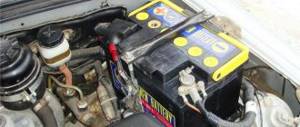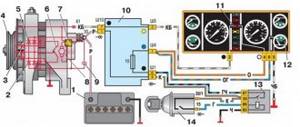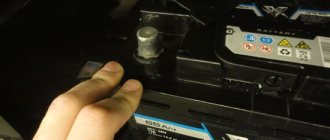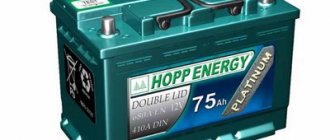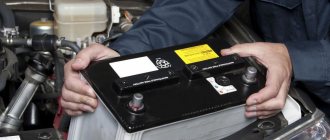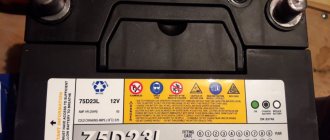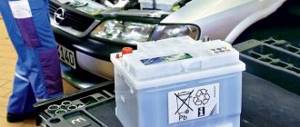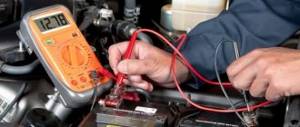Not everyone knows why a car battery boils. Novice car enthusiasts have sometimes never even heard of this phenomenon. Meanwhile, the consequences are often quite serious and unpleasant.
Each technological process must fit within a certain regulatory framework. And if the battery starts to “boil”, then this is a reason to think about whether everything is okay with it and what the danger is.
In the article we will consider the phenomenon that is popularly called “battery boiling”. The expression “the radiator has boiled” is more common. It turns out that both can boil.
What are the reasons for a battery to boil?
It cannot be stated unequivocally that the phenomenon of “battery boiling” is a chemical or physical process. As is known, when preparing the electrolyte, 38% sulfuric acid is used, which, with a density of 1.84 g/cm3, boils at a temperature of +337°C. Distilled water boils at 100°C. The electrolyte used in batteries has a physical boiling point at which bubbles begin to form, ~113°C.
A car battery can boil for several reasons:
Recharging the battery during operation
May occur due to a malfunction of the voltage regulator relay in the generator.
Overcharging can also occur if you use a charger with manual adjustment of the charging current. The rated charging current is 10% of the battery capacity. But if you significantly exceed this value, then there is a high probability that the battery will boil or even fail.
Short circuit of cans
Short circuits of cans can occur on both used and new batteries. Due to the extreme operating conditions of the battery (constant vibration), the interplate zones and separators are destroyed, which can ultimately lead to their short-circuiting.
A sudden boiling of the electrolyte causes a large current that flows during a short circuit.
Sulfation of plates
Sulfation of the plates leads to a decrease in battery capacity. The consequence of this is undercharging of the battery and rapid self-discharge, as a result of which the rated voltage of the battery may be below 10 V. As a result, when charging such a battery, a large current flows, which leads to the boiling process.
Please note that it is not recommended to charge a heavily discharged battery from a car generator. This can cause the battery to boil and the generator to fail.
On-board electrical system overload
If, when operating a car, several energy-intensive consumers are used simultaneously (heating system, air conditioning, etc.), the battery may overheat, especially in the summer. Overheating can cause boiling.
The battery “boiling” process can be visually observed only on serviced batteries. On maintenance-free batteries, the boiling process can only be detected by ear, using special devices.
You can see how the battery boils on a running car below.
The car battery is boiling - what does this mean?
There are several possible reasons for the rapid boiling of the electrolyte inside the battery:
- low acid level - electrolyte needs to be added;
- battery plate short circuit;
- sulfation inside the battery.
Sulfation is the process of destruction of plates. It is irreversible and begins due to improper handling of the battery or for natural reasons.
So should the battery boil when charging? In fact, this also happens with fully working batteries. Chemical reactions inside the battery occur constantly and are accompanied by characteristic sounds. During the electrolysis process, gas is actively formed, which causes boiling.
Should the battery boil when charging?
The release of gas should not cause panic. If the battery boils while charging, do not rashly disconnect the charger. The gas formed during charging is a mixture of oxygen and hydrogen, rising to the top of the container in the form of bubbles. This phenomenon is perceived by most beginners as a boiling battery.
However, the electrolyte level should be checked and maintenance should be taken seriously! When the battery is boiling, it is charged with boiling gas. Chemicals are released into the atmosphere, which can easily cause a fire hazard if there are open fire sources nearby.
Gas release during battery charging and self-discharge
If the battery is fully or almost fully charged, but is still connected to the charger and charging, then the process of gassing begins in the banks. A battery is considered charged when, during the charging process, its density no longer increases over a long period of time and the electrolyte boils and gases are released abundantly. Gas evolution is also observed when the battery is recharged, when the relay regulator or charger produces a voltage above 14.4 volts.
Also, the phenomenon of “boiling” is observed when the battery self-discharges. If you look into the jars, you can observe how gas bubbles periodically rise from the electrolyte.
During the charging process, the intensity of bubble release increases gradually. At the initial stage, a slight rustling sound may be heard from the battery side, and later a clearly visible gurgling sound may be heard. If you do not plan to add distilled water, then in order to avoid splashing of the electrolyte, it is recommended not to completely unscrew and remove the plugs, but only loosen them, leaving a gap for gases to escape.
A sign of a malfunction is a situation when the battery begins to boil immediately after charging current is applied or a few minutes after that. The immediate onset of gas evolution indicates that there is severe sulfation of the plates or that the plates are destroyed.
What to do if the battery boils while charging?
Knowing what exactly needs to be done when the battery boils while charging is worth a lot. This will clearly benefit beginners, because often ignorance leads to dire consequences. Remember that the battery is a sensitive part of the car that requires care and attention from the car owner. Do not forget to check it in a timely manner - it is better to contact a qualified service that has professional testers for testing.
Motorists do not always adequately perceive the boiling of electrolyte in the battery. There are situations in which the release of gas from the battery is a normal process. But sometimes electrolyte boiling is a consequence of a serious malfunction. Below we will figure out why the battery boils and what to do in this case.
Electrolysis in a battery
Every car owner knows perfectly well that distilled water needs to be added to the battery being serviced from time to time.
Where does it go from the closed case? It can disappear from the battery in two ways: during heat, it evaporates through the ventilation system, or a process occurs that we will now consider.
Due to the battery losing distilled water, the density of the electrolyte in it increases, which in turn leads to sulfation of the plates.
Water is consumed for electrolysis of water.
Electrolysis is an electrochemical process that occurs between two electrodes placed in an electrolyte. The positive electrode is called the anode, and the negative electrode is called the cathode.
During electrolysis, water takes part in the electrode process both as an oxidizing agent, being reduced at the cathode, and as a reducing agent, being oxidized at the anode.
When current passes through the electrodes, their potentials change - electrode polarization occurs. The cathode potential moves in the negative direction, the anode potential moves in the positive direction. The polarization of the electrodes depends on the current density and temperature.
Under these conditions, electrolysis (decomposition) of water occurs. Under the influence of this electrochemical process, water decomposes into hydrogen and oxygen. In this case, oxygen is formed on the positive plates, and hydrogen is formed on the negative ones. During this decomposition, hydrogen is produced twice as much as oxygen, i.e. negative plates emit more gas than positive plates.
Why do car batteries explode?
If you remember your school chemistry lessons, then hydrogen was also called differently - “explosive gas”.
Why it has such a name is not difficult to guess. In a certain proportion of mixing hydrogen and oxygen, such a mixture explodes from the slightest spark or open fire. It is thanks to the boiling of the battery (the phenomenon of electrolysis of water) that this explosive mixture accumulates from time to time in a battery with a faulty ventilation system. This sometimes causes the battery to explode.
The battery explodes, the entire hood and engine are covered in electrolyte, the plastic is in pieces - you wouldn’t wish this development of events on anyone.
In order to eliminate and prevent such negative phenomena, batteries have a spark arrester in the ventilation holes.
In advanced battery designs, there is a microporous polymer spark arrester, through which the internal space of the battery communicates with the atmosphere. Electrolyte vapors in the cells of a special separator are condensed and returned to the battery, without reaching the battery terminals and electrical wiring.
The main purpose of the spark arrester is to prevent sparks from entering the battery, which could cause the explosive gas produced during the electrolysis of water to explode.
Never smoke or strike matches or lighters near a charging battery.
Always connect the crocodile chargers to the battery terminals before plugging the charger into the network, and disconnect them after turning off the device from the mains, since otherwise sparks may jump out during connection and if the above-mentioned “explosive gas” accumulates during charging, an explosion may occur.
Battery boils when driving
When charging a battery from a stationary device, the release of gas indicates one of the following circumstances:
- the charging mode is incorrectly selected;
- the battery is heavily sulfated;
- The battery has fully recharged its charge.
If the battery boils while driving, then two problems are most likely: the generator is faulty or the drain holes in the battery case are clogged. Let's talk about them.
The generator supplies increased voltage
Potentially, the generator is capable of delivering voltage and current much higher than what is required to charge the battery. In addition, these indicators depend on the engine speed. To limit the current and voltage supplied to the battery, a regulator is provided on the generator.
The regulator cuts off the voltage at the generator terminals at 14.4 volts. The charging current depends on the recommended battery capacity for your car. On most passenger cars, the charging current is limited to 5 amperes.
Malfunction of the regulator can lead to an increase in voltage or charging current. And if the battery boils while driving, there is a high probability that the problem lies precisely in the voltage regulator on the generator.
Ventilation problem
All lead acid batteries are equipped with a vent(s). The channels for removing gases from the battery are located in plugs or made as a separate outlet.
Ventilation ducts serve three purposes:
- remove accumulated gases;
- condense and return the evaporating water back to the jar;
- protect against flame penetration into the battery when evaporating hydrogen ignites.
Why doesn't a discharged (undercharged) battery boil?
Everyone knows that a normal battery placed on charge does not boil. And why? Because the current supplied from the charger to the battery is initially spent on the electrochemical reaction of sulfate decomposition.
When a battery discharges, lead sulfate forms on the positive and negative plates as a natural result of the discharge process. Such sulfate, when charged, turns into active substances without any difficulty. The fault term “plate sulfation” is used when discharged (i.e. coated with a layer of lead sulfate) plates do not charge when normally charged.
Lead sulfate, formed under normal discharge conditions, consists of small crystals evenly distributed in a porous and highly conductive active mass. With a subsequent charge, such sulfate again easily turns into lead dioxide and lead.
With unacceptably deep discharges, the active mass of the plates almost completely turns into sulfate, and in some cases the sulfate goes from a fine-crystalline state to a coarse-crystalline state.
Moreover, if there are surface-active organic substances in the battery, then adsorption of these substances occurs on the lead sulfate crystals of the negative plates, as a result of which the rate of dissolution of the crystals decreases.
In this case, the internal electrical resistance of the active mass increases sharply. The sulfate completely covers the particles of the conductive active mass, and the passage of current through the plates stops. In addition, the potential at which gas evolution begins during charging changes.
The transition of the adsorbed sulfate formed in the plates into lead dioxide and lead becomes impossible under these conditions, and the battery loses part of its capacity, and with very deep sulfation, almost all of its capacity, as we wrote about in the previous article.
The reasons for the formation of large lead sulfate crystals may be:
- systematic, excessively deep discharge of batteries;
- regular undercharging;
- leaving batteries in a half-discharged or discharged state for a long time;
- low electrolyte level.
When the battery is almost fully charged and there is little soluble sulfate left on the plates, then some of the current supplied to the terminals turns out to be excessive.
Where does the excess current go?
That's right, the process of electrolysis begins in the battery, i.e. decomposition of water into hydrogen and oxygen. Therefore, the battery begins to “boil”.
For this reason, an uncharged battery does not boil during charging, but an already charged battery “boils.” This is a sign that the battery has been charged and has stopped accepting a charge.
How to calculate the charging current and why does it depend on the battery capacity?
Also, the boiling process begins when recharging, i.e. when the battery is supplied with a charging current greater than that required for the normal operation of the electrolysis process.
How is charging current calculated? The nominal capacity, say 60 A/h, must be divided by 10. More details can be found here. For a battery with this rated capacity, the charging current will be considered 6 A.
Why did they accept this value?
For the normal operation of the electrochemical process of dissolving sulfate crystals, a certain amount of current is required. This amount is directly related to the area of the active plates of the battery, i.e. its capacity.
Battery capacity is calculated based on the total area of active areas in the battery. The battery charging current directly depends on the battery capacity.
Sulfation refers to a chemical process when, under normal charging conditions, sulfate crystals stop dissolving, which causes a sharp decrease in the active area of the battery plates. This is followed by a chain reaction: the battery capacity decreases, therefore, the starting current decreases.
When charging a battery, we use the charging current calculated based on the nominal capacity (for 60 batteries - 6 A). And if the capacity is reduced to 40 A/h, then 2 A turns out to be unnecessary.
These 2 extra amperes begin to participate in the decomposition reaction of water during the electrolysis process. The battery begins to “boil”.
Fault diagnosis
The primary sign of boiling is a faint sour smell near the machine. You can catch it only when the engine is running, when charging current is flowing to the battery. Upon visual inspection of the part, small gas bubbles are visible rising from the bottom. A slight hiss is heard.
Important: inspection of such a battery cannot be carried out with an open flame (a burning lighter, a cigarette). Hydrogen is a flammable gas that, when mixed with air, forms an explosive mixture!
You can determine the fact of recharging using a multitester (multimeter). The check should be carried out on the car with the engine running. In this case, the voltage at the battery terminals should not exceed 14.3 volts. Higher readings indicate overcharging and a possible malfunction of the voltage regulator.
A malfunction of one of the internal capacitors can be diagnosed by measuring the voltage on the battery disconnected from the generator. There is no need to physically disconnect. Just turn off the engine. With one faulty “bank”, the output voltage will be reduced by 2.1 V (9.9 V instead of 12 V).
Physical overheating of the battery is determined tactilely, by testing it with your hand. If the battery is very hot, then the reason for boiling is a lack of electrolyte or too high an ambient temperature. Operation defects are detected by visual inspection.


